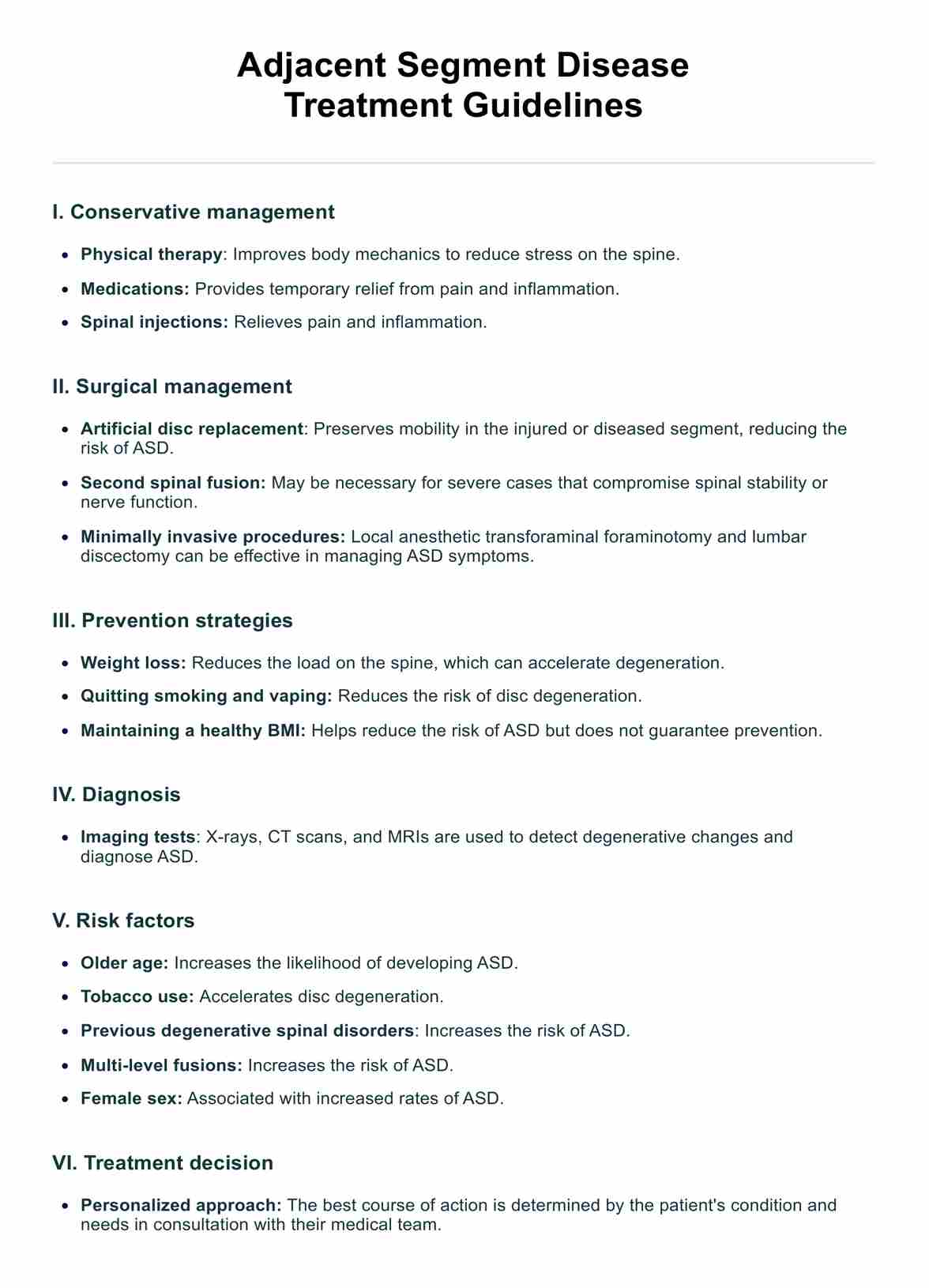Adjacent segment disease (ASD) is a condition where the spinal segments next to a previously fused vertebrae degenerate, often following spinal fusion surgery. This degeneration can lead to symptoms such as pain, instability, and neurological deficits.

Adjacent Segment Disease Treatment Guidelines
Comprehensive Adjacent Segment Disease Treatment Guidelines for healthcare professionals. Download our free PDF example for detailed management strategies.
Adjacent Segment Disease Treatment Guidelines Template
Commonly asked questions
ASD is diagnosed through patient history, physical examination, and imaging studies such as X-rays, CT scans, and MRIs. These diagnostic tools help detect degenerative changes in the adjacent segments and guide appropriate treatment.
Treatment for ASD includes conservative management such as physical therapy and medications, interventional procedures like epidural steroid injections and facet joint injections, and surgical options, including artificial disc replacement and extension of fusion. Treatment choice depends on the severity of symptoms and the patient's overall condition.
EHR and practice management software
Get started for free
*No credit card required
Free
$0/usd
Unlimited clients
Telehealth
1GB of storage
Client portal text
Automated billing and online payments











